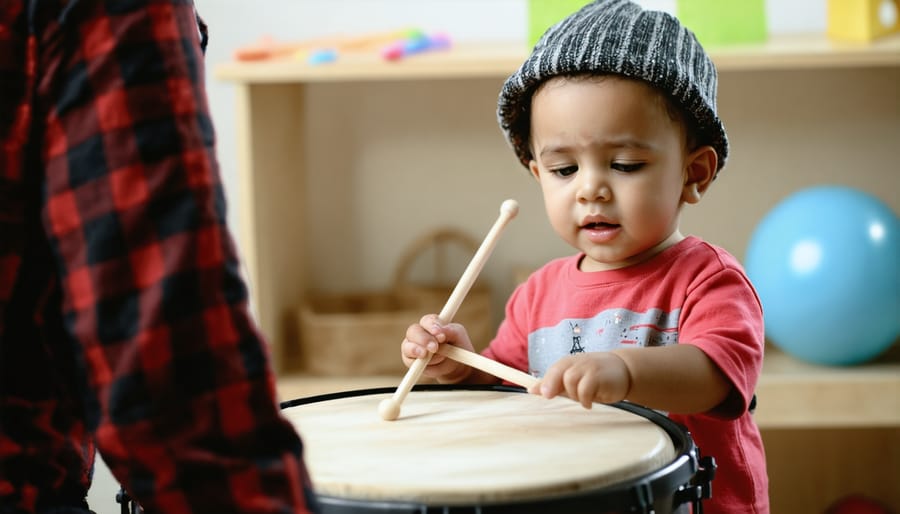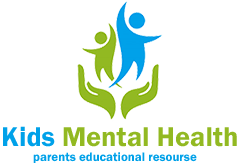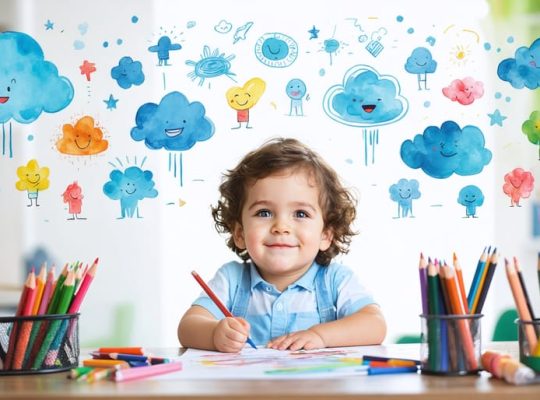When six-year-old Marcus first sat down at the piano during his music therapy session, he barely spoke or made eye contact. Three months later, he was singing, laughing, and connecting with his family in ways they never thought possible. This transformative power of music therapy isn’t just anecdotal – it’s backed by decades of scientific research and clinical evidence.
Music therapy has emerged as a powerful tool for emotional healing and developmental support, combining the universal appeal of music with structured therapeutic techniques. Studies show that it can significantly improve communication skills, reduce anxiety, enhance emotional regulation, and boost cognitive development in children and adults alike.
From helping children with autism develop social skills to supporting stroke patients in their recovery, music therapy’s effectiveness spans a remarkable range of applications. Research published in the Journal of Music Therapy demonstrates that participants show measurable improvements in mood, behavior, and neural connectivity after consistent music therapy sessions.
But what makes music therapy particularly compelling is its natural, non-invasive approach. Unlike many traditional treatments, it harnesses something we all inherently respond to – the rhythm, melody, and emotional resonance of music – to create lasting positive changes in our brains and bodies.
How Music Therapy Impacts Your Child’s Emotional World
The Science Behind Music and Emotions
Music has a remarkable ability to influence our emotions, and neuroscience helps us understand why. When we listen to music, multiple areas of our brain activate simultaneously, creating a symphony of neural responses. The amygdala, our emotional processing center, responds strongly to musical elements like rhythm, melody, and harmony.
Research shows that music can trigger the release of dopamine, often called the “feel-good” hormone, which explains why certain songs can instantly lift our mood. Similarly, calming music can lower cortisol levels, reducing stress and anxiety. For children, whose brains are still developing, these responses can be even more pronounced.
Dr. Sarah Thompson, a pediatric neurologist, explains, “Music engages both hemispheres of the brain, creating new neural pathways that help process emotions more effectively. This is particularly beneficial for children who struggle with emotional expression.”
The connection between music and emotions isn’t just psychological – it’s physiological too. Music can influence heart rate, breathing patterns, and muscle tension, making it a powerful tool for emotional regulation and healing. This scientific foundation explains why music therapy can be so effective in supporting emotional well-being.

Real Changes in Real Children
Meet Sarah, a seven-year-old who struggled with anxiety and found it difficult to express their inner world. After six months of music therapy sessions, her parents noticed remarkable changes. Sarah now uses drumming techniques to manage her anxious moments and confidently participates in group activities.
Recent studies have documented numerous success stories like Sarah’s. At Children’s Memorial Hospital, a group of autistic children showed significant improvements in social interaction after participating in weekly music therapy sessions. They learned to maintain eye contact, take turns, and engage in meaningful conversations through musical games.
Another touching example comes from Marcus, a ten-year-old with ADHD. His occupational therapist incorporated rhythm-based activities into his treatment plan, resulting in better focus during school hours and improved emotional regulation at home. His mother reports that simple percussion exercises before homework time have transformed their evening routine from stressful to enjoyable.
These real-life examples demonstrate how music therapy creates lasting positive changes in children’s lives, supporting their emotional, social, and cognitive development in measurable ways.

Music Therapy Techniques That Help Children Self-Regulate

Rhythm and Movement Activities
Rhythm and movement activities form a powerful core component of music therapy, particularly in helping children manage their emotional responses. When children engage in structured rhythmic activities, such as drumming circles or dance movements, their bodies naturally synchronize with the beat, creating a calming effect on their nervous system.
Sarah Thompson, a music therapist with 15 years of experience, shares: “When children participate in rhythm-based activities, they’re not just making music – they’re learning to regulate their emotions through physical movement and structured sound.”
These activities can include simple exercises like marching to a steady beat, playing hand drums in a group, or moving scarves to gentle music. The predictable patterns help children feel grounded and in control, while the physical engagement releases tension and promotes emotional expression.
Research shows that rhythmic activities in music therapy can:
– Reduce anxiety and stress
– Improve focus and attention
– Enhance emotional awareness
– Build social connections through group participation
– Develop better impulse control
For children who struggle with verbal expression, these movement-based activities provide a safe, non-verbal way to process and express their feelings while building emotional resilience.
Songwriting and Expression
Songwriting and creative expression through music offer powerful tools for emotional processing in music therapy. When children struggle to verbalize their feelings, creating lyrics or melodies can provide a safe outlet for their thoughts and emotions. Music therapist Sarah Chen shares, “I’ve witnessed children who barely spoke transform into confident storytellers through songwriting sessions.”
The process typically begins with simple exercises, like completing song lyrics or adding new verses to familiar tunes. As children become more comfortable, they might create original songs about their experiences, fears, or hopes. This musical journey helps them develop emotional awareness and coping skills.
Parents often report breakthrough moments during songwriting sessions. “My daughter wrote a song about her anxiety,” recalls Maria, whose 9-year-old attended music therapy. “It helped us understand what she was going through and opened up conversations we’d never had before.”
The beauty of musical creation lies in its flexibility – children can express themselves through instruments, vocals, or both, making it accessible regardless of musical background or verbal abilities. This adaptability ensures that every child can find their voice through music.
Listening and Relaxation Exercises
Music therapy offers several effective listening and relaxation exercises that can help both children and adults find calm and emotional balance. One popular technique is guided music listening, where individuals listen to carefully selected pieces while focusing on their breath and body sensations. This simple yet powerful exercise can reduce anxiety and promote mindfulness.
Progressive muscle relaxation paired with soothing instrumental music has shown remarkable results in reducing stress. Children particularly respond well to this combination, as it gives them a structured way to release physical tension while enjoying calming melodies.
Another effective approach is the creation of personal relaxation playlists. Music therapists often work with clients to identify songs that help them feel safe and peaceful. Parents can help their children build these collections, incorporating both familiar lullabies and gentle classical pieces.
For younger children, musical storytelling can be especially beneficial. This involves listening to or creating stories with musical accompaniment, helping them process emotions while staying engaged. Many parents report that their children’s bedtime routines have improved significantly through these structured listening activities.
The key is consistency and creating a dedicated space for these exercises, whether it’s a quiet corner at home or a specific time of day when everyone can participate in musical relaxation together.
When Music Therapy Works Best
Identifying Good Candidates
Music therapy can be particularly beneficial for children facing various challenges, though some young ones may show stronger responses to this therapeutic approach than others. Children with autism spectrum disorders often demonstrate remarkable progress, as music helps bridge communication gaps and promotes social interaction. Those struggling with anxiety or depression may find music therapy to be one of their most effective emotional processing tools, helping them express feelings they find difficult to put into words.
Children with attention deficit disorders frequently show improved focus and engagement during musical activities, while those with developmental delays can use rhythm and melody to enhance their learning and motor skills. Young trauma survivors often connect deeply with music therapy, as it provides a safe, non-verbal outlet for processing complex emotions.
Even children without specific diagnoses who simply struggle with emotional regulation or social skills can benefit significantly from music therapy. Sarah Thompson, a music therapist with 15 years of experience, shares, “I’ve seen remarkable transformations in children who initially seemed reluctant to participate. The key is their natural curiosity about music and instruments.”
The best candidates are often those who show some interest in music, though prior musical experience isn’t necessary. What matters most is openness to the experience and consistent participation in sessions.
Setting Realistic Expectations
When starting music therapy, it’s important to approach the journey with realistic expectations. While music therapy can be highly effective, progress often occurs gradually and varies from child to child. Most families typically see initial changes in their child’s engagement and mood within the first few weeks of consistent sessions.
Dr. Sarah Martinez, a leading music therapist, explains, “Parents should look for small victories first – perhaps their child is more willing to participate in activities, shows improved focus during sessions, or begins using music to express emotions at home.” These subtle changes often precede more significant developmental breakthroughs.
The frequency and duration of sessions play a crucial role in outcomes. Most children attend weekly 30-60 minute sessions, and meaningful progress typically becomes evident within 3-6 months of regular participation. However, some children may need longer to show substantial improvements, while others might progress more quickly.
Remember that music therapy isn’t a cure-all but rather a supportive tool that works best as part of a comprehensive treatment approach. Success often looks different for each child – for some, it might mean reduced anxiety during daily transitions, while for others, it could be improved social interactions or better emotional expression.
Keep a progress journal to track small improvements, and maintain open communication with your music therapist about goals and expectations. This helps ensure the therapy remains aligned with your child’s specific needs and development path.
Getting Started with Music Therapy
Finding a Qualified Therapist
Finding a qualified music therapist is crucial for ensuring effective treatment. Start by looking for professionals who hold the MT-BC (Music Therapist-Board Certified) credential, which indicates they’ve met rigorous educational and clinical requirements. The American Music Therapy Association (AMTA) maintains a searchable directory of certified therapists across the country.
When evaluating potential therapists, consider their experience working with your specific needs or age group. Don’t hesitate to ask about their approach, treatment philosophy, and success stories. Many therapists offer initial consultations where you can discuss goals and determine if they’re a good fit for your family.
Look for therapists who:
– Maintain current certification and continuing education
– Have experience with your specific concerns
– Communicate clearly about their methods and expectations
– Work collaboratively with other healthcare providers
– Demonstrate genuine passion for their work
Ask for references and read reviews when available. Your primary care physician, school counselor, or local children’s hospital may also provide reliable referrals to experienced music therapists in your area. Remember, finding the right therapist might take time, but it’s worth the effort to ensure the best possible outcomes.
Supporting Your Child’s Journey
Parents play a vital role in maximizing the benefits of music therapy for their children. Supporting your child’s emotional journey through music therapy involves creating a nurturing environment that extends beyond therapy sessions.
Start by maintaining open communication with your child’s music therapist, learning about session activities, and understanding how to reinforce therapeutic concepts at home. Create a dedicated space for music exploration, filled with simple instruments and opportunities for creative expression. This might include percussion instruments, singing bowls, or even household items that make interesting sounds.
Participate enthusiastically in home music activities recommended by the therapist. Whether it’s singing together, creating rhythmic patterns, or listening to specific pieces of music, your engagement shows your child that music therapy is valuable and enjoyable. Remember to celebrate small victories and improvements, focusing on the joy of musical expression rather than perfection.
Consider incorporating music into daily routines, such as using calming songs during bedtime or energetic tunes during physical activities. This consistent exposure helps reinforce the therapeutic benefits while making the experience more natural and enjoyable for your child.
Research consistently shows that music therapy can be a powerful and effective treatment option for children and adults alike. Through structured musical activities and interventions, certified music therapists help individuals develop emotional regulation skills, improve social connections, and achieve therapeutic goals in a gentle, engaging way. The evidence supporting music therapy’s effectiveness, particularly in reducing anxiety, managing stress, and improving mood, makes it a valuable consideration for parents seeking holistic treatment approaches. Whether used alongside traditional therapies or as a standalone intervention, music therapy offers a non-invasive, enjoyable path to emotional and behavioral growth. If you’re considering music therapy for your child, consult with healthcare providers and certified music therapists to develop a personalized treatment plan that addresses your child’s unique needs and goals.




